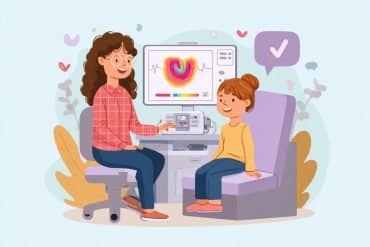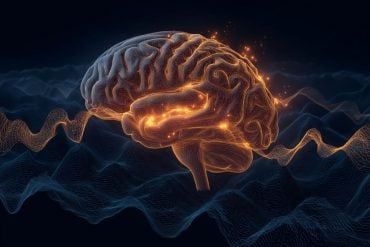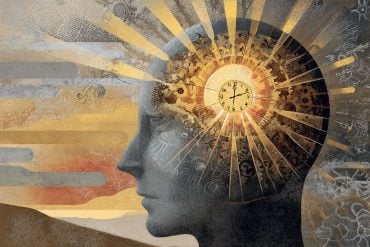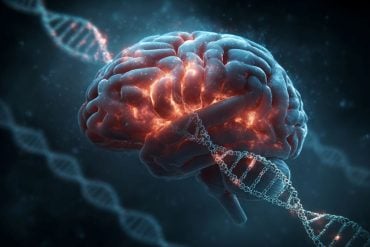Summary: Researchers have identified two subpopulations of neurons in the BNST that connect to separate populations of neurons in the lateral hypothalamus which appear to drive two opposing emotional states; avoidance and reward seeking
Source: NIH/NIAAA.
Researchers have identified connections between neurons in brain systems associated with reward, stress, and emotion. Conducted in mice, the new study may help untangle multiple psychiatric conditions, including alcohol use disorder, anxiety disorders, insomnia, and depression in humans.
“Understanding these intricate brain systems will be critical for developing diagnostic and therapeutic tools for a broad array of conditions,” said George F. Koob, Ph.D., director of the National Institute on Alcohol Abuse and Alcoholism (NIAAA), which contributed funding for the study. The National Institute of Mental Health (NIMH) also provided major support for the research. NIAAA and NIMH are parts of the National Institutes of Health.
A report of the study, by first author Dr. William Giardino and colleagues at Stanford University, appears in the August 2018 issue of Nature Neuroscience.
Responding appropriately to aversive or rewarding stimuli is essential for survival. This requires fine-tuned regulation of brain systems that enable rapid responses to changes in the environment, such as those involved in sleep, wakefulness, stress, and reward-seeking. These same brain systems are often dysregulated in addiction and other psychiatric conditions.
In the new study, researchers looked at the extended amygdala, a brain region involved in fear, arousal, and emotional processing and which plays a significant role in drug and alcohol addiction. They focused on a part of this structure known as the bed nucleus of stria terminalis (BNST), which connects the extended amygdala to the hypothalamus, a brain region that regulates sleep, appetite, and body temperature.
The hypothalamus is also thought to promote both negative and positive emotional states. A better understanding of how the BNST and hypothalamus work to coordinate emotion-related behavior could shed light on the emotional processes dysregulated in addiction.
“These circuits, also implicated in binge drinking, are likely to be elements in understanding the detailed mechanisms driving stress-related alcohol- or drug-seeking and consummatory behaviors,” said first author Dr. Giardino.
To map the brain circuitry between the BNST and the hypothalamus, Dr. Giardino and his colleagues exposed mice to rewarding and aversive stimuli, and then visualized and manipulated the activity of neurons using fiber optic techniques.

The scientists identified two distinct subpopulations of neurons in the BNST that connect to separate populations of neurons in the lateral hypothalamus. These parallel circuits drove opposing emotional states: avoidance (aversion) and approach (preference). Different neurotransmitters were linked to aversion and preference within these neurocircuits – corticotropin releasing factor was involved in aversion, while cholecystokinin played a role in preference.
“The discovery of the unique and opposing influences of these specific BNST to LH circuits may be broadly relevant to the fields of neuroscience and mental health,” said senior author Luis de Lecea, Ph.D., Professor of Psychiatry and Behavioral Sciences at Stanford University.
The authors note that future studies of the BNST to LH pathways will inform the development of improved therapeutic approaches for psychiatric disorders.
Funding: This work was supported by National Institutes of Health grants F32 AA022832 (W.J.G.), R01 MH087592 (L.d.L.), R01 MH102638 (L.d.L.), and F32 MH106206 (D.J.C.). We also recognize support from A. Olson and the Stanford Neuroscience Microscopy Service, NIH NS069375.
Source: NIH/NIAAA
Publisher: Organized by NeuroscienceNews.com.
Image Source: NeuroscienceNews.com image is credited to Stanford University – de Lecea lab.
Original Research: Abstract for “Parallel circuits from the bed nuclei of stria terminalis to the lateral hypothalamus drive opposing emotional states” by William J. Giardino, Ada Eban-Rothschild, Daniel J. Christoffel, Shi-Bin Li, Robert C. Malenka & Luis de Lecea in Nature Neuroscience. Published July 23 2018.
doi:10.1038/s41593-018-0198-x
[cbtabs][cbtab title=”MLA”]NIH/NIAAA”Key Brain Circuits for Reward Seeking and Avoidance Behavior Identified.” NeuroscienceNews. NeuroscienceNews, 26 August 2018.
<https://neurosciencenews.com/avoidance-reward-circuit-9741/>.[/cbtab][cbtab title=”APA”]NIH/NIAAA(2018, August 26). Key Brain Circuits for Reward Seeking and Avoidance Behavior Identified. NeuroscienceNews. Retrieved August 26, 2018 from https://neurosciencenews.com/avoidance-reward-circuit-9741/[/cbtab][cbtab title=”Chicago”]NIH/NIAAA”Key Brain Circuits for Reward Seeking and Avoidance Behavior Identified.” https://neurosciencenews.com/avoidance-reward-circuit-9741/ (accessed August 26, 2018).[/cbtab][/cbtabs]
Abstract
Parallel circuits from the bed nuclei of stria terminalis to the lateral hypothalamus drive opposing emotional states
Lateral hypothalamus (LH) neurons containing the neuropeptide hypocretin (HCRT; orexin) modulate affective components of arousal, but their relevant synaptic inputs remain poorly defined. Here we identified inputs onto LH neurons that originate from neuronal populations in the bed nuclei of stria terminalis (BNST; a heterogeneous region of extended amygdala). We characterized two non-overlapping LH-projecting GABAergic BNST subpopulations that express distinct neuropeptides (corticotropin-releasing factor, CRF, and cholecystokinin, CCK). To functionally interrogate BNST→LH circuitry, we used tools for monitoring and manipulating neural activity with cell-type-specific resolution in freely behaving mice. We found that Crf-BNST and Cck-BNST neurons respectively provide abundant and sparse inputs onto Hcrt-LH neurons, display discrete physiological responses to salient stimuli, drive opposite emotionally valenced behaviors, and receive different proportions of inputs from upstream networks. Together, our data provide an advanced model for how parallel BNST→LH pathways promote divergent emotional states via connectivity patterns of genetically defined, circuit-specific neuronal subpopulations.






